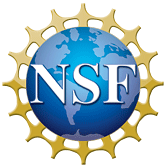Property:Extended model description
From CSDMS
This is a property of type Text.
Q
QTCMs are models of intermediate complexity suitable for the modeling of tropical climate and its variability. It occupies a niche among climate models between complex general circulation models and simple models. +
QUAL2K (or Q2K) is a river and stream water quality model that is intended to represent a modernized version of the QUAL2E (or Q2E) model (Brown and Barnwell 1987). Q2K is similar to Q2E in the following respects:
One dimensional. The channel is well-mixed vertically and laterally.
* Steady state hydraulics. Non-uniform, steady flow is simulated.
* Diurnal heat budget. The heat budget and temperature are simulated as a function of meteorology on a diurnal time scale.
* Diurnal water-quality kinetics. All water quality variables are simulated on a diurnal time scale.
* Heat and mass inputs. Point and non-point loads and abstractions are simulated. +
S
QuickChi enables the rapid analysis of stream profiles at the global scale from SRTM data. +
G
Quickly generates input files for and runs GSFLOW, the USGS integrated groundwater--surface-water model, and can be used to visualize the outputs of GSFLOW. +
R
RCPWAVE is a 2D steady state monocromatic short wave model for simulating wave propagation over arbitrary bahymetry. +
REF/DIF is a phase-resolving parabolic refraction-diffraction model for ocean surface wave propagation. It was originally developed by Jim Kirby and Tony Dalrymple starting in 1982, based on Kirby's dissertation work. This work led to the development of REF/DIF 1, a monochromatic wave model. +
REM mechanistically simulates channel bed aggradation/degradation and channel widening in river networks. It has successfully been applied to alluvial river systems to simulate channel change over annual and decadal time scales. REM is also capable of running Monte Carlo simulations (in parallel to reduce computational time) to quantify uncertainty in model predictions. +
RHESSys is a GIS-based, hydro-ecological modelling framework designed to simulate carbon, water, and nutrient fluxes. By combining a set of physically-based process models and a methodology for partitioning and parameterizing the landscape, RHESSys is capable of modelling the spatial distribution and spatio-temporal interactions between different processes at the watershed scale. +
ROMS is a Free-surface, terrain-following, orthogonal curvilinear, primitive equations ocean model. Its dynamical kernel is comprised of four separate models including the nonlinear, tangent linear, representer tangent linear, and adjoint models. It has multiple model coupling (ESMF, MCT) and multiple grid nesting (composed, mosaics, refinement) capabilities. The code uses a coarse-grained parallelization with both shared-memory (OpenMP) and distributed-memory (MPI) paradigms coexisting together and activated via C-preprocessing. +
U
ROMS is a Free-surface, terrain-following, orthogonal curvilinear, primitive equations ocean model. Its dynamical kernel is comprised of four separate models including the nonlinear, tangent linear, representer tangent linear, and adjoint models. It has multiple model coupling (ESMF, MCT) and multiple grid nesting (composed, mosaics, refinement) capabilities. The code uses a coarse-grained parallelization with both shared-memory (OpenMP) and distributed-memory (MPI) paradigms coexisting together and activated via C-preprocessing. +
H
RaVENS: Rain and Variable Evapotranspiration, Nieve, and Streamflow
Simple "conceptual" hydrological model that may include an arbitrary number of linked linear reservoirs (soil-zone water, groundwater, etc.) as well as snowpack (accumulation from precipitation with T<0; positive-degree-day melt) and evapotranspiration (from external input or Thorntwaite equation).
It also includes a water-balance component to adjust ET (typically the least known input) to ensure that P - Q - ET = 0 over the course of a water year.
Other components plot data and compute the NSE (Nash–Sutcliffe model efficiency coefficient). +
R
Rabpro is a Python package to delineate watersheds, extract river flowlines and elevation profiles, and compute watershed statistics for any location on the Earth’s surface. +
L
Relative wetness and factor-of-safety are based on the infinite slope stability model driven by topographic and soils inputs and recharge provided by user as inputs to the component. For each node, component simulates mean relative wetness as well as the probability of saturation based on Monte Carlo simulation of relative wetness where the probability is the number of iterations with relative wetness >= 1.0 divided by the number of iterations. Probability of failure for each node is also simulated in the Monte Carlo simulation as the number of iterations with factor-of-safety <= 1.0 divided by the number of iterations. +
R
RivGraph is a Python package that automates the extraction and characterization of river channel networks from a user-provided binary image, or mask, of a channel network. +
Rouse-Vanoni Equilibrium Suspended Sediment Profile Calculator +
S
Routines pertaining to the paper published as: doi: 10.1073/pnas.1206785109 +
Routines pertaining to the paper published as: doi: 10.1137/S0036144504445765 +
Routines pertaining to the paper published as: doi: 10.1111/j.1365-246X.2008.03854.x +
Routines pertaining to the paper published as: doi: 10.1016/j.acha.2012.12.001 +
Routines pertaining to the paper published as: doi: 10.1111/j.1365-246X.2006.03065.x +
